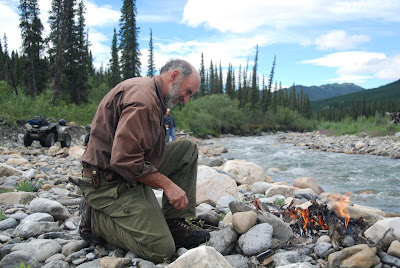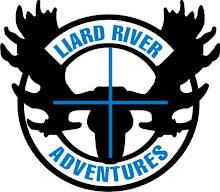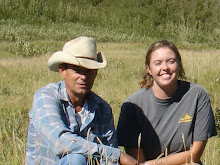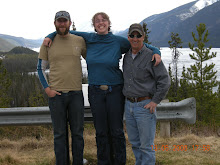 Ray Coupe : A man of adventure, leadership, land ethic and dedication.
Ray Coupe : A man of adventure, leadership, land ethic and dedication.After 36 years with the Forest Service, January 31st 2011 will be Ray Coupe's last day as a full-time BC Government employee. I am thankful to have crossed paths with Ray a couple years ago on the top of Nonda Mountain in the heart of the Northern Rockies. Since that time, Ray has contributed a huge amount to my learning of ecology, plants and ecosystem dynamics. I find it hard to believe that the Government could possibly think that it would be the right decision to make his position "redundant" as I am sure there are many across BC who will echo my words when I say that what Ray brings not only to what used to be called the Forest Service, but also to all Natural Resource managers and even more so to the scientific community, public and land stewards of British Columbia, is impossible to quantify.
Ray Coupe's vast knowledge is a vital asset to all of us across the entire province of British Columbia. Redundant would be the very last word on a 100 paged list that I would use to describe the critical role that Ray has played in what used to be called the Forest Service. One person's loss is another person's gain and it is my great honour, pleasure and delight to have Ray as a member of our Range and Fire Ecology Research Team in North East British Columbia. His expertise, wisdom, professionalism and dedication to helping and mentoring others is beyond any call to duty that we have as public servants. I am in awe of your selfless, generous and kind donations of your time to the Forest Service and to me and I know both of those will continue long into the future! Thank you for all you do!! Ray Coupe - you're one heck of a guy and I'm glad you're on my team! See you in the North Country this summer ( I hope $$) and I solemnly promise this to you: no more daubenmaire frames!!!! Onwards and upwards my friend! Here's to you!
 Ray Coupe : The Botanist.
Ray Coupe : The Botanist. Ray Coupe : The Nevis Creek dancer.
Ray Coupe : The Nevis Creek dancer. Ray Coupe : The knower of all plants!
Ray Coupe : The knower of all plants! Monkshood
Monkshood Ray Coupe : The Daubenmaire demon!
Ray Coupe : The Daubenmaire demon! Ray Coupe : An intelligent and skilled team member!
Ray Coupe : An intelligent and skilled team member! Ray Coupe : The Chef!
Ray Coupe : The Chef! Ray Coupe : A thoughtful contributor.
Ray Coupe : A thoughtful contributor. Ray Coupe : A man who maintains his cool, especially when exploring permafrost!
Ray Coupe : A man who maintains his cool, especially when exploring permafrost! Ray Coupe : Weather proof.
Ray Coupe : Weather proof. Ray Coupe : Always calm and ready for a challenge!
Ray Coupe : Always calm and ready for a challenge! Ray Coupe : A mentor and a guide.
Ray Coupe : A mentor and a guide. Ray Coupe : The legend continues!
Ray Coupe : The legend continues! Geranium richardsonii
Geranium richardsoniihttp://www.books-by-isbn.com/1-55105/1551050579-Plants-of-southern-interior-British-Columbia-1-55105-057-9.html
http://www.books-by-isbn.com/1-55105/1551052199-Plants-of-southern-interior-British-Columbia-and-the-inland-northwest-1-55105-219-9.html
http://www.for.gov.bc.ca/hfd/pubs/docs/lmh/Lmh46.pdf
http://www.alibris.com/booksearch.detail?invid=10513716044&browse=1&qwork=5162456&qsort=&page=1
http://www.geog.ubc.ca/biodiversity/eflora/E-FloraTreesofBritishColumbia.html




























































